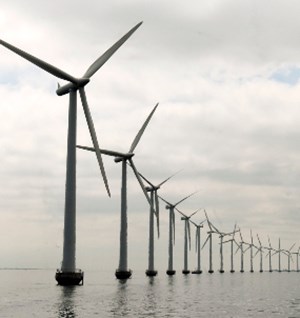Siemens Energy halves emissions in its operations
(WO)— Siemens Energy improved in almost all areas of sustainability this past year, as reflected in its fiscal year 2022 Sustainability Report, published on Dec. 12.
One important reporting parameter across the entire value chain is greenhouse gas emissions. Here, a fundamental distinction is made between emissions for which the company is directly responsible or in control, such as gas consumption, indirect emissions through purchased energy such as electricity consumption, and indirect emissions in the upstream and downstream supply chain.
In its direct area of responsibility, Siemens Energy emitted 21% fewer greenhouse gases in fiscal year 2022 than in the previous year. In fact, the company has reduced its greenhouse gas emissions in this area by 50% since the baseline year 2019.
By 2030, Siemens Energy aims to be completely climate-neutral.
"Global demand for electricity will increase by 25% by 2030,” said Christian Bruch, CEO and Chief Sustainability Officer for Siemens Energy. “Satisfying this hunger for energy sustainably, safely, and affordably is one of the core tasks of our time. Our mission is to support our customers in their transformation to greater sustainability.
“But this also means we must set a good example and apply the highest standards in our operations. Our goal is to be a leader within the energy industry when it comes to sustainability, corporate governance, and social issues. “
A key reason for the company's success in reducing greenhouse gases is its use of renewable energies. 90% of the electricity required for its operations comes from renewable sources. The planned target was 84%.
Conventional contracts were replaced more quickly by new agreements or supplemented by guarantees of origin, where it was impossible to purchase renewable energy directly from the supplier. By September 30, 2023, electricity demand is expected to be covered entirely by green energy.
Siemens Energy also reports emissions that result from the operation of its own products over the entire life cycle. These account for more than 99% of Siemens Energy's total greenhouse gas emissions and represent the most significant challenge to climate neutrality.
In the past year, 46 million metric tons fewer greenhouse gases were emitted in this category (a 3% reduction compared to 2021). Overall, there was a 12% reduction compared to the 2019 baseline. This is primarily due to the coal phase-out Siemens Energy implemented in 2020.
This demonstrates the urgency to switch from coal to gas for power generation as quickly as possible, in addition to using renewable energies: Nearly 40% of the world's power is still generated using coal; switching to gas could eliminate approximately 50% of the emissions at each plant.
More sustainability in supply chains
The report reflects Siemens Energy’s environmental, social, and corporate governance (ESG) achievement in the past fiscal year and areas where it can improve. For example, approximately 20% of Siemens Energy’s workforce comprises women. Within the first two management levels (Gas and Power, excluding Siemens Gamesa), it rose by a further percentage point last year to 22%.
But Siemens Energy's targets are more ambitious, intending to achieve 30% by 2030. The company expects to progress rapidly in this area under the newly implemented organizational structure that went into effect on October 1, 2022.
Siemens Energy will take further measures to become a leading ESG company. The share of green power produced in-house will be expanded, the automation of building technology will be driven forward, and the company's own energy requirements will be further reduced.
With the appointment of Group Compliance Officer Dr. Anita Schieffer to the newly created position of Human Rights Officer, the course is set to meet new requirements for international companies, such as those posed by the Supply Chain Act.



